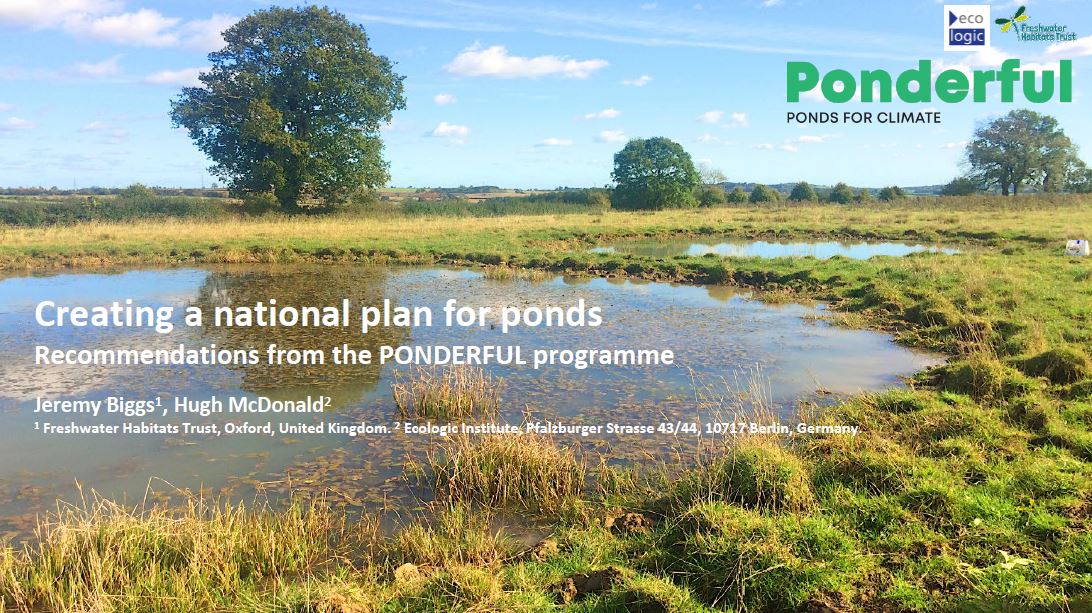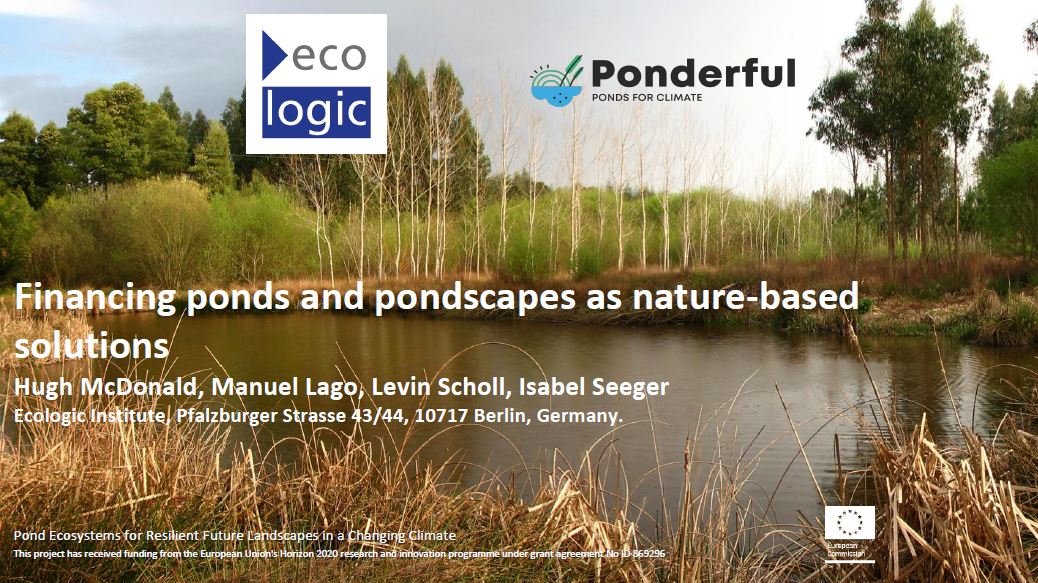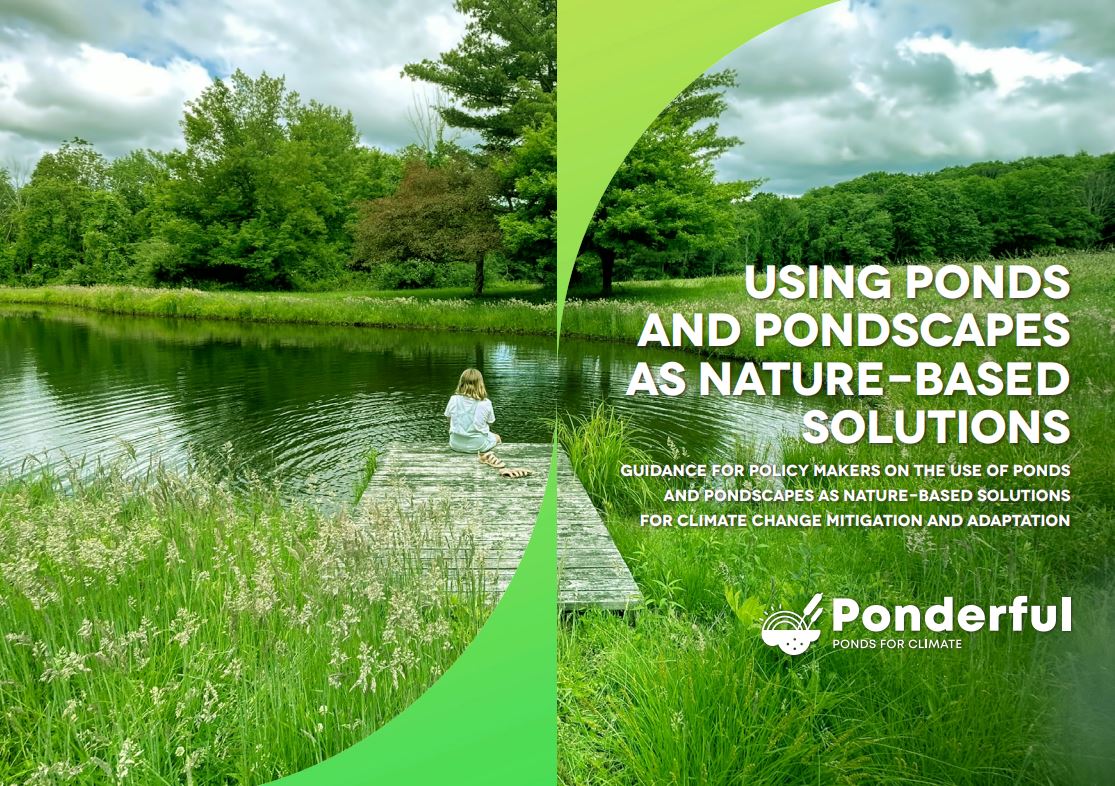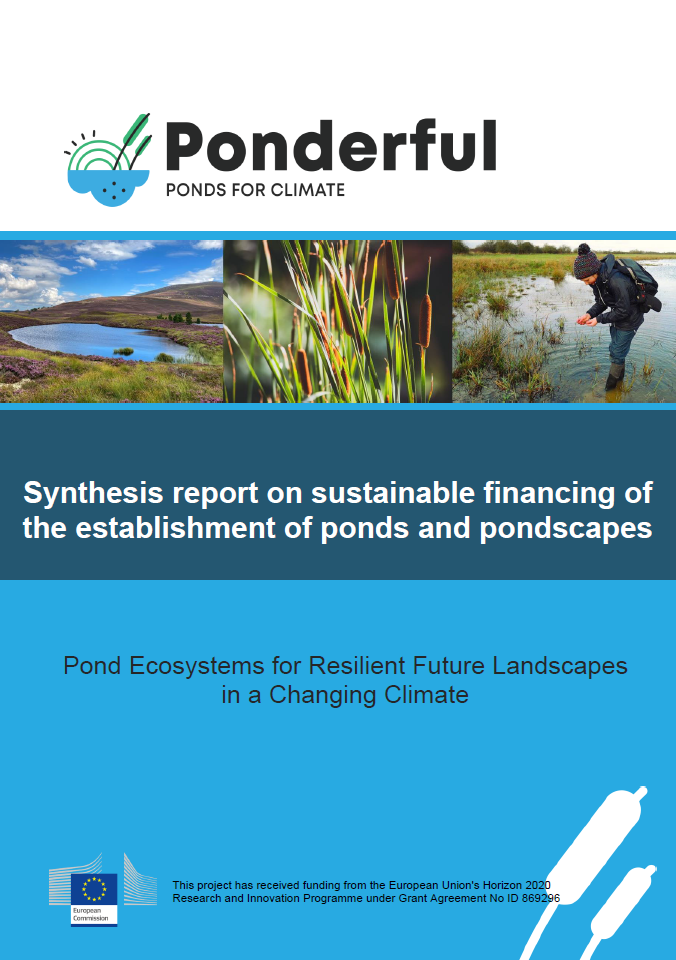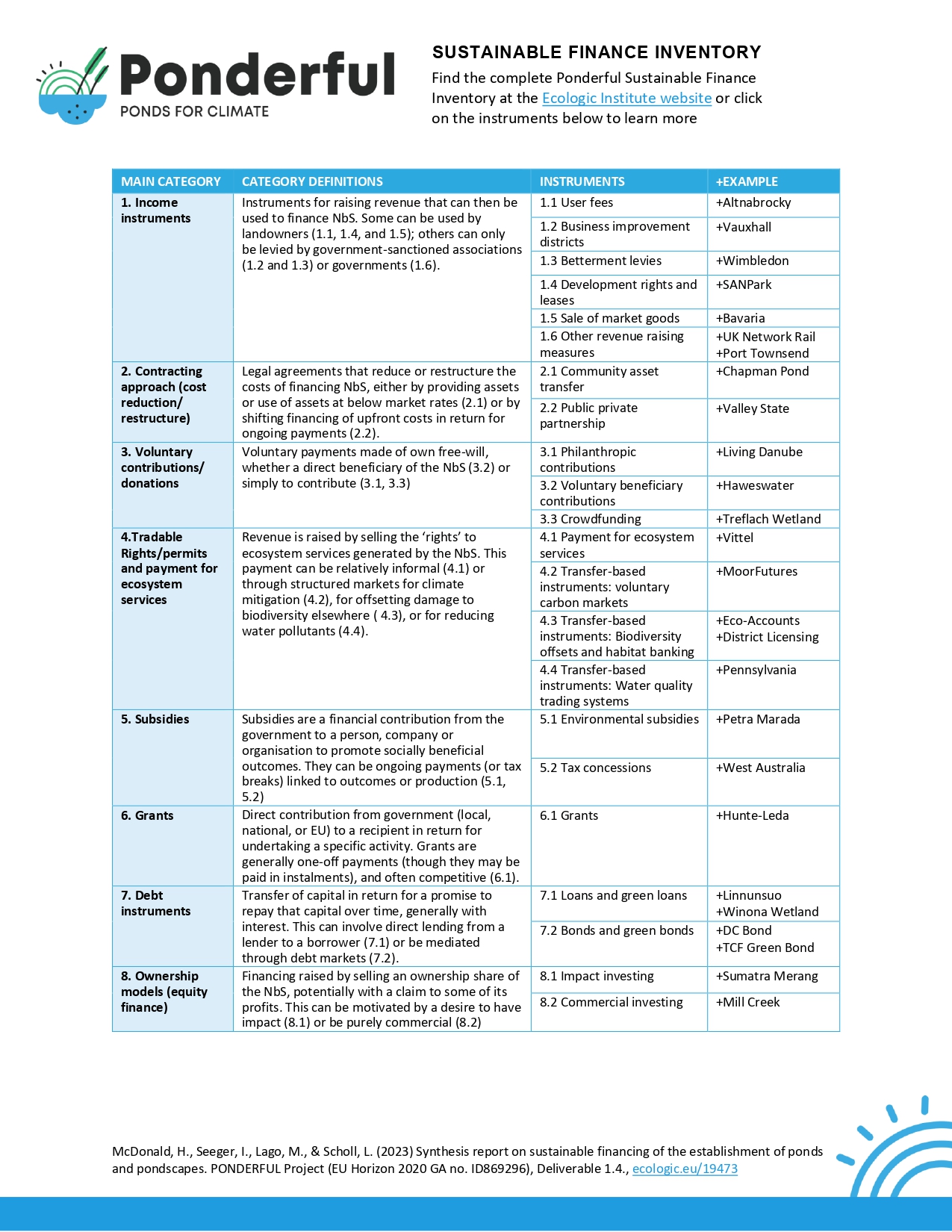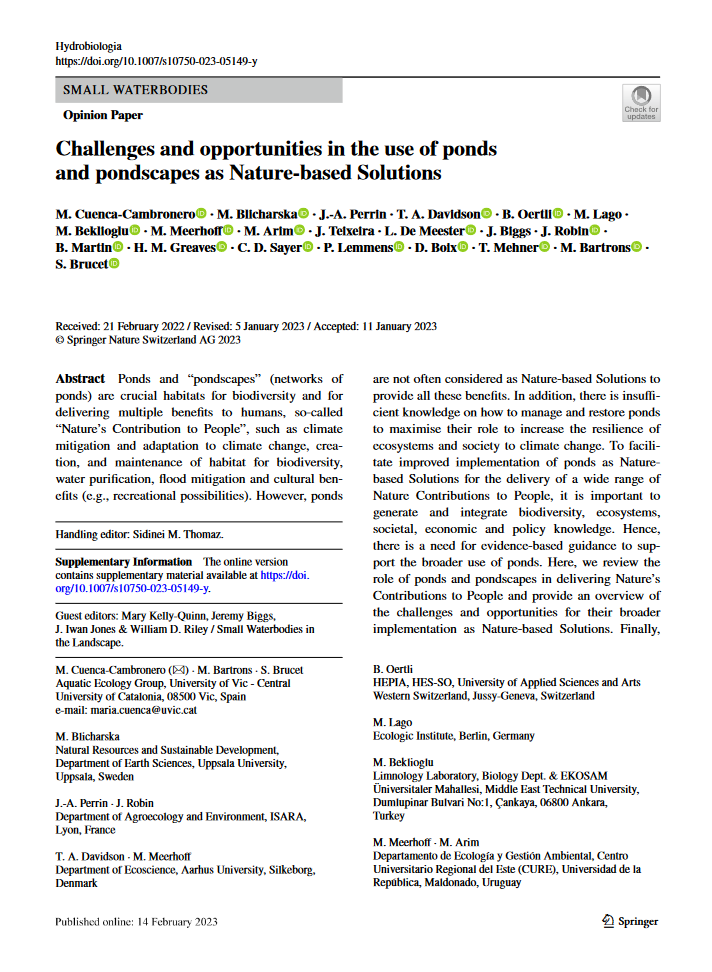Ponds and Pondscapes: A technical guide to the use of ponds and pondscapes as nature-based solutions for climate change mitigation and adaptation
- Publication
- Citation
Biggs, J., Hoyle, S., Matos, I., McDonald, H., Nicolet, P., Oertli, B., Teixeira, J. (2024). Ponds and pondscapes: a technical guide to the use of ponds and pondscapes as nature-based solutions for climate change mitigation and adaptation, EU Horizon 2020 Ponderful project, University of Vic – Central University of Catalonia. https://doi.org/10.5281/zenodo.13844497
The technical handbook of the PONDERFUL project shows how ponds and pond landscapes can be used as Nature-Based Solutions (NBS) to tackle societal challenges such as climate change, biodiversity loss and water scarcity. Ponds – small standing bodies of water with an area of 1 m² to 5 ha – together form so-called pondscapes, which act as networks of habitats. These habitats not only provide protection for endangered species, but also numerous ecosystem services such as water purification, climate regulation and the promotion of biodiversity.
The challenge: Threats to ponds and pond landscapes
Ponds are one of the most common and species-rich freshwater habitats, but have historically been severely undervalued. In Europe, between 50 % and 90 % of ponds have been lost due to agricultural intensification, urbanization and pollution. Climate change is also threatening these ecosystems, as rising temperatures and changing precipitation patterns can cause ponds to dry out or eutrophicate. Added to this is the threat posed by invasive species that displace native plants and animals.
Sustainable solutions: Protection, management and creation of ponds
The handbook describes concrete measures to protect, restore and create ponds and pond landscapes in order to overcome social and ecological challenges. These include:
- Restoration of existing ponds
- Removal of excess sediment and invasive species to restore ecological functions
- Restoration of "ghost ponds", i.e. filled ponds, through re-excavation.
- Creation of new ponds
- Designing new ponds to restore lost ecosystems and promote habitat diversity. Strategic sites for biodiversity and water management are taken into account.
- Improving water quality
- Use of buffer zones to reduce nutrient inputs and pollution from agriculture. Regular desilting to maintain functionality.
- Adaptation to climate change
- Use of "CLIMA ponds" specifically designed to store water and bind greenhouse gases. Designing ponds that can better withstand seasonal fluctuations.
- Promotion of habitat diversity
- Creating ponds with different depths and shoreline structures to support different species.
- Long-term management and monitoring
- Planning measures for the long-term maintenance of the ponds, including monitoring water quality and biodiversity.
- Involvement of civil society
- Outreach and education programs and volunteer projects to raise awareness of pond conservation and engage local communities.
These measures create the basis for maximizing the functions of ponds as nature-based solutions while promoting biodiversity and human quality of life.
Ponds and pond landscapes play a crucial role in adapting to climate change and protecting biodiversity. The PONDERFUL handbook provides practical guidelines for dealing with these valuable ecosystems and shows how ponds can be integrated into existing landscapes so that nature and people benefit equally.

